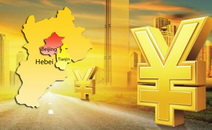Positive Changes Taking Place in China’s Economic Operation -- An Analysis and Outlook of the Economic Situation in 2001-2002
Zhang Liqun
I. Basic Features of the Economic Situation in 2001
On the basis of the improvement in 2000, the Chinese economy continued to maintain a steady growth in 2001. Preliminary statistics indicate that the gross domestic product in the year totaled 9.58 trillion yuan, or 7.3 percent higher than that in the previous year. In contrast to the weak performance of the world economy as a whole, China’s economic growth became all the more striking. The basic features of the economic situation in 2001 were as follows:
(I) New basis for economic growth began taking shape.
The economic environment has undergone profound changes since the Chinese economy entered a new stage of development. The mode of economic development and the system and mechanism of the economy were found to be incompatible with new circumstances. The narrow space for industrial development, the serious difficulties encountered by enterprises, the rising unemployment and the macroeconomic regulation were also found to be incompatible with the new situation. Since 1998, however, the Chinese economy began gradually adapting itself to the highly competitive market environment and building up its own ability on spontaneous growth after a series of measures were taken to expand domestic demand, adjust the economic structure and deepen various reforms. The following are the main manifestations:
1. Broader space for industrial development
First, the real estate industry posted a rapid growth. After the mid-1990s, housing became a new hot spot of urban consumption thanks to the rise in the income of urban residents. The reform of urban housing system and the introduction of consumer credit offered a strong support for the expansion of this hot spot. At the same time, accelerating urbanization became a matter of urgency. Increased government investment in infrastructure construction helped upgrade the level of urban infrastructure, which in turn offered an active push to the process of urbanization. The acceleration of urbanization provided a broad space for real estate development investment. As a result, the improvement in the consumption structure of urban residents and the acceleration of urbanization has greatly expanded the space for real estate development investment. Since 1998, real estate investment has constantly grown and become an important driving force for investment growth and economic growth (see table 1). The floor space and sales revenue of commercial housing all grew at an annual rate of more than 20 percent. In 2001, these main indicators rose by over 30 percent, making the real estate industry the fastest-growing sector of the tertiary industry.
Table 1. Growth of Real Estate Investment 1998-2001
|
Year |
1998 |
1999 |
2000 |
2001.1-2001.11 |
|
Comparative growth rate of real estate investment |
13.7 |
13.53 |
19.46 |
29.7 |
|
Proportion of real estate investment in the total investment growth |
12.58 |
33.76 |
28.89 |
30.011 |














